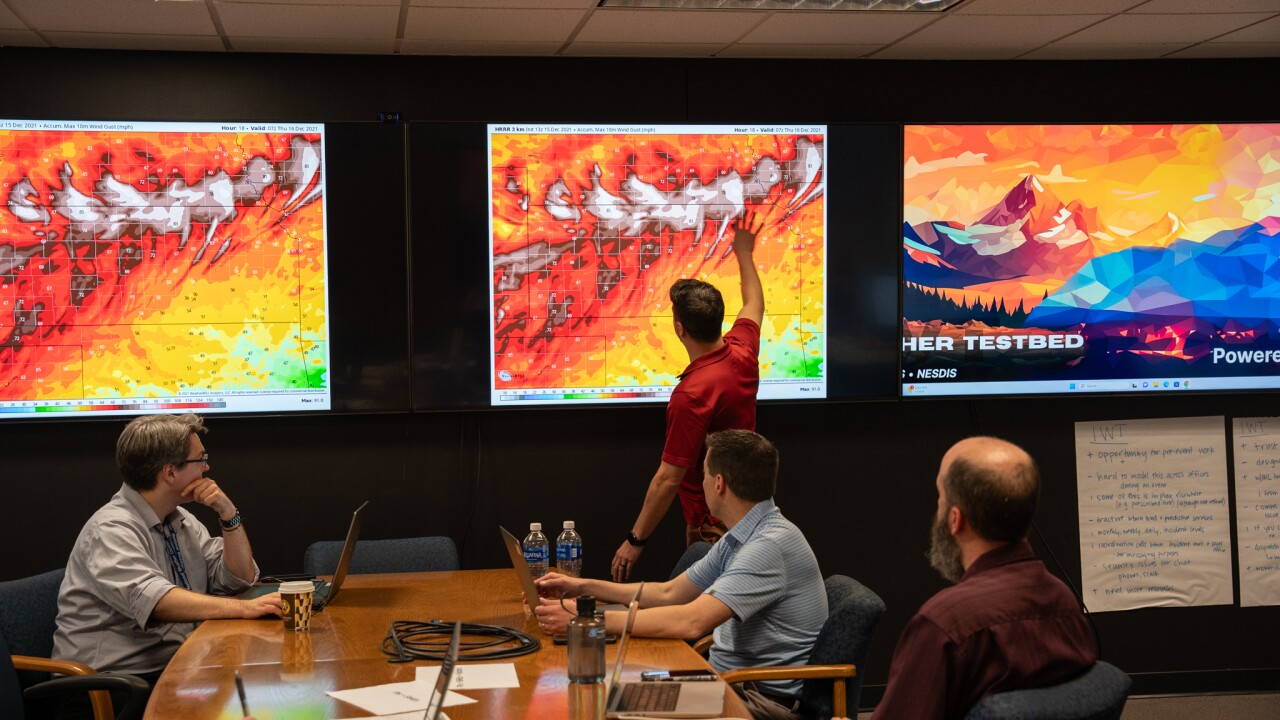BOULDER, Colo. — The National Oceanic and Atmospheric Administration (NOAA) is turning to artificial intelligence (AI) in hopes of catching wildfires right as they start.
The Next Generation Fire System (NGFS) uses AI to scan satellite imagery. The system can identify wildfires as small as one acre in size.
NOAA is testing the system at its Fire Weather Testbed, an "operations-to-research-to-operations" research area in Boulder.
“[It's] the same way that if I was looking at the satellite and looking to see where a new hot spot is… in the infrared imagery,” said Zach Tolby, manager of NOAA's Fire Weather Testbed. “The AI technology is trying to do the same thing, right? It's trying to emulate what I would look at as a human.”

Wildfires can be hard to spot when they start, especially those deep in the mountains or rural areas of the countryside. Quick identification can be important in keeping wildfires from growing in size.
“It’s really imperative to find that spot before it gets big because the smaller wildfires are, the easier they are to fight,” said Tolby. “The farther out you go into the mountains, into the forest, the less people you have and so the less opportunities you have for someone to see that new wildfire and call it in.”
Wildfire identification is not the only thing NGFS is capable of. It can also track the intensity of a wildfire over time.
“That can help you prioritize which wildfires need the most attention at a certain time or how that fire is developing throughout the day to help keep firefighters safe on the ground, as well,” said Tolby.
Working with fire responders and meteorologists at the NOAA Fire Weather Testbed is an important facet of Tolby’s job. At the Testbed, NOAA can run simulations of real-world wildfire scenarios to help prepare people while also testing out new tools.

“It’s really imperative to understand throughout the communication process how those new tools and technology will work for everybody because it’s the people on the ground that need that information and to make their decisions,” said Tolby.
One side of the room has incident meteorologists, who would deploy to the front lines of a wildfire to provide focused forecasts. The other side has members from the U.S. Forest Service, firefighters, and other fire responders. The scientists who run the training provide simulated information to each group in real time. Such info includes data they would normally see throughout the course of the day while dealing with wildfires.
“Going out to wildfires is a very stressful situation,” said Tolby. “It's really imperative that you have all the necessary tools and training ahead of time to help get you ready for that situation.”

Homeless Union in Colorado Springs speaks out during cleanup operation
Multiple people experiencing homelessness talked on camera as the City of Colorado Springs executed a cleanup operation on Wednesday. The operation continues Thursday.




